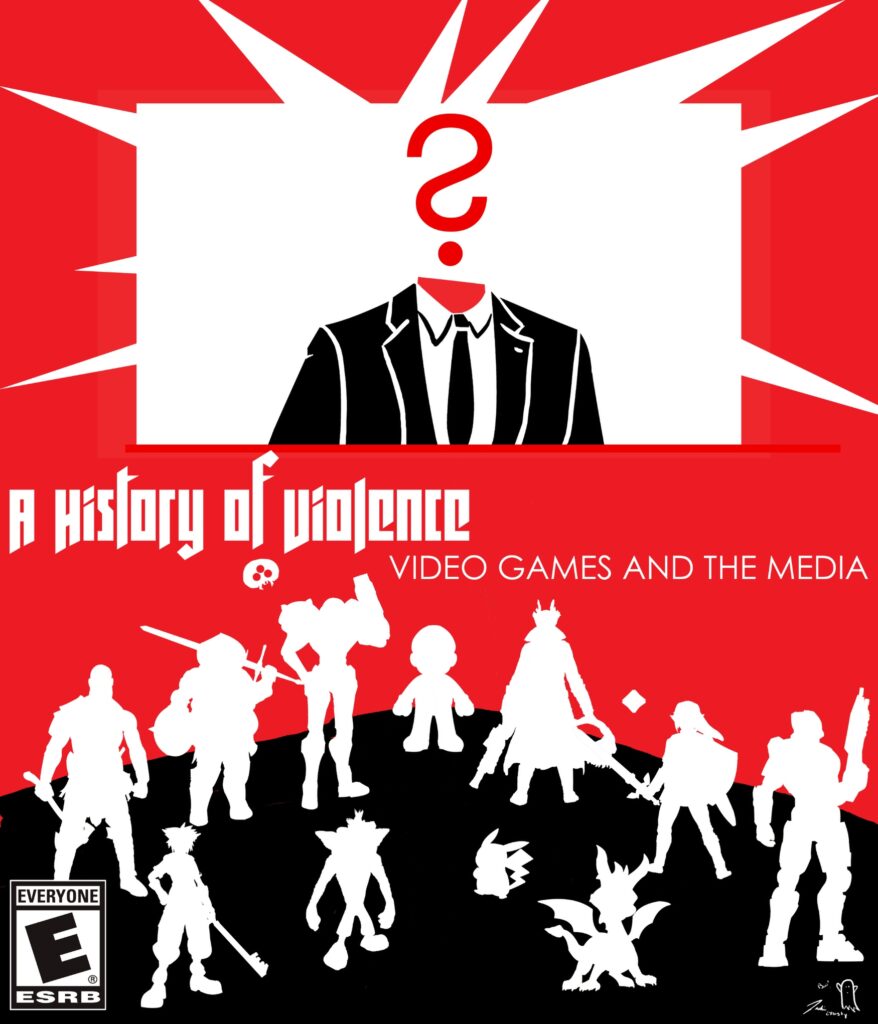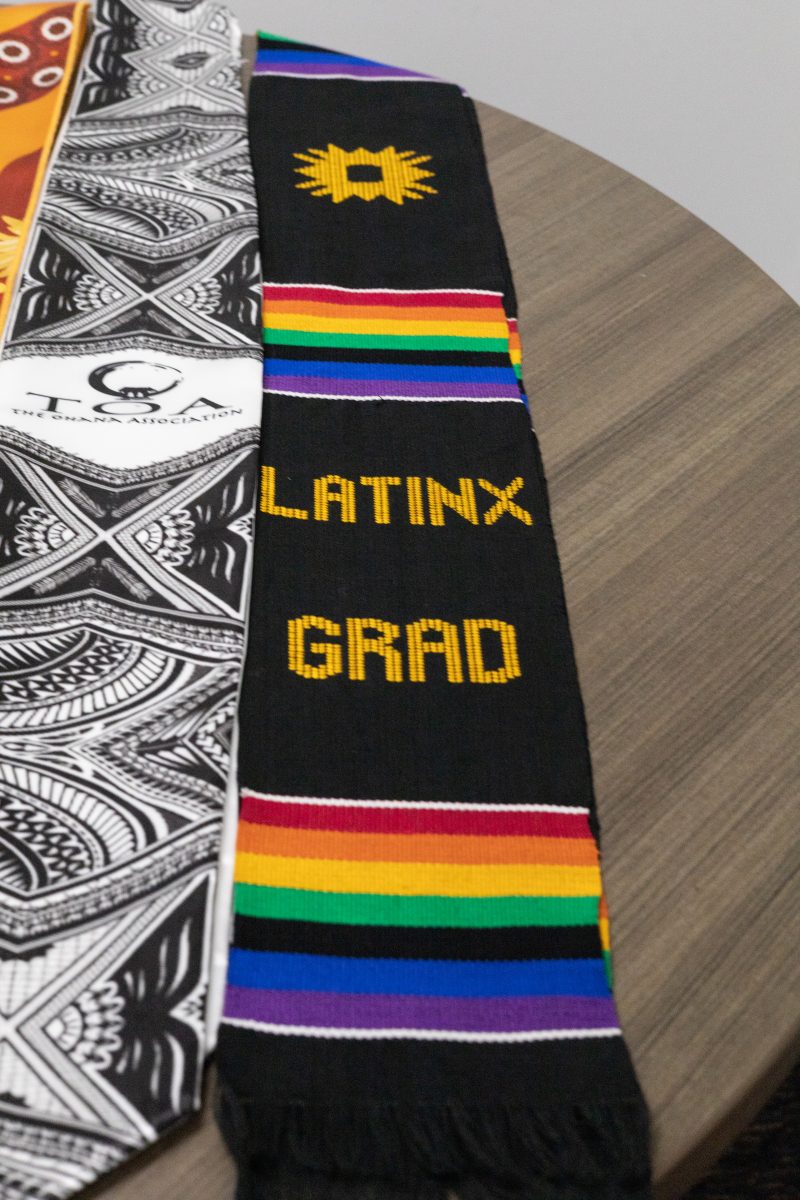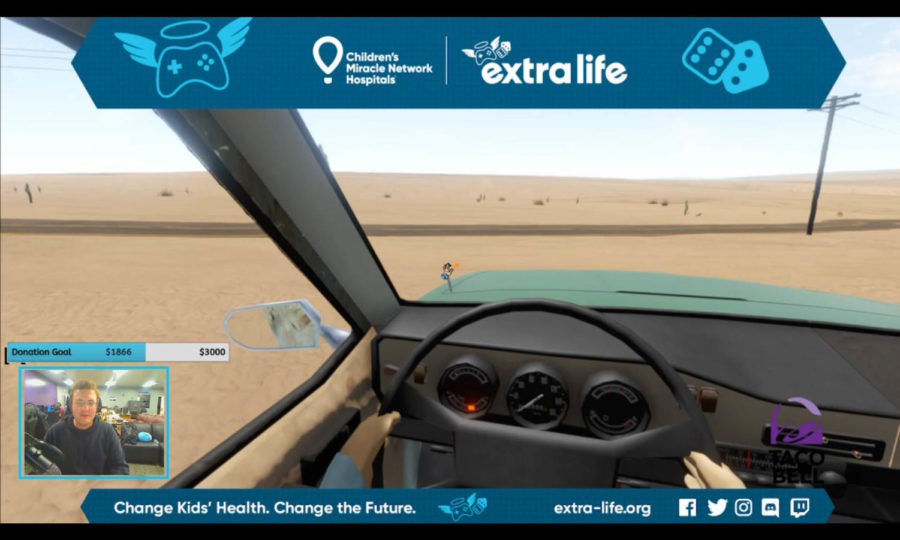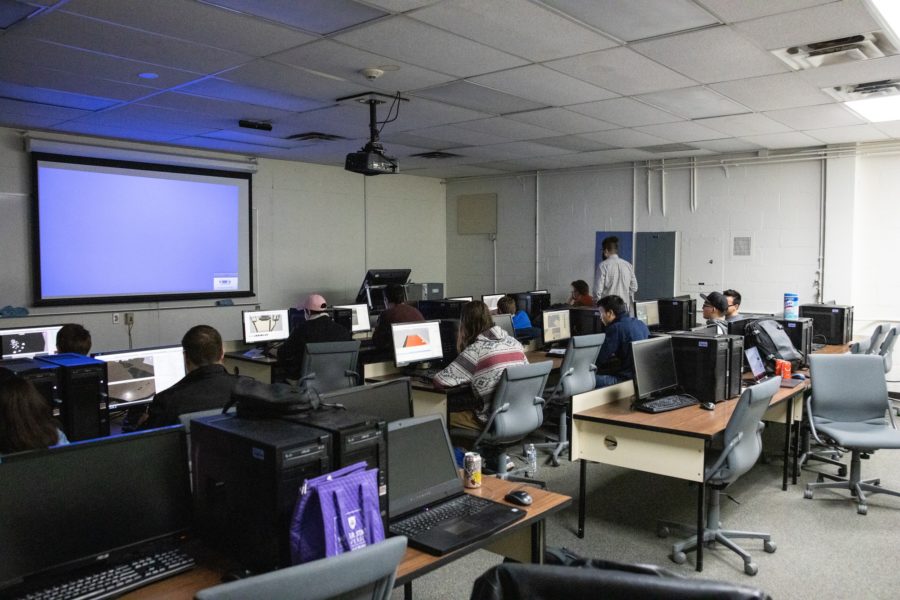It’s hard to be a video game developer, especially in Utah.
Even someone relatively familiar with the game industry could be forgiven for not realizing development happens in Utah at all. Most of the development for what are considered triple-A games — “Red Dead Redemption 2,” “Fortnite,” “Assassin’s Creed: Odyssey” — takes place elsewhere: New York, North Carolina, Montreal, and of course, California.
The numbers, however, show that the video game industry has a real presence in Utah — a presence not deterred by triple-A publishers or an often volatile culture. This presence generated $71 million in revenue and supported more than 1,200 jobs in Utah in 2017, according to a 2017 Entertainment Software Association report.
The ESA site also lists 43 companies, developers and publishers, operating in Utah—this number up from 27 companies in a 2015 ESA report.
One of the largest — and only triple-A — game companies in Utah in recent memory, EA Salt Lake, shut down in 2017. Executive Producer Vance Cook, who left the company seven years before it was closed down by EA’s main headquarters said his studio was a 25-year success. In fact, Cook not only created one of the first major golf titles but developed the genre as a whole over the better part of three decades.
Cook’s involvement with the video game industry started in 1987 with Access Software, where he finished work on a golf game called “Links 386 Pro.” Five years later, Cook founded Headgate Studios based largely off the royalties from “Links.”
Cook said even in 1992, Utah didn’t present any unique challenges to opening up a game studio specifically. State and regional factors came later.
“At that time, I was creating my own product,” Cook said. “It was just challenging funding it, bringing people in and overcoming the engineering and financial problems you would get in starting any business.”
At the time, Cook and his team were developing a top-of-the-line, next-generation golf game. Cook quickly received an offer he couldn’t refuse to buy his company from another publisher called Sierra. Rebranding shortly thereafter, now Sierra Sports bought the rights to what would soon be known as “PGA Championship Golf.”
“At the time they bought me and in subsequent years, they were the No. 1 publisher in the world on PC,” Cook said of Sierra. “It turns out, though, you wanted to be the No. 1 publisher on consoles. They were out of position, and they were hemorrhaging money.”
This unabated loss of funds ultimately led Sierra to offer Cook an opportunity to buy back his company for, according to Cook, pennies on the dollar. Cook put the decision to a vote, and his employees unanimously agreed to continue working with him.
Cook soon entered business dealings with EA to pair his product — a next-gen, best-in-the-market golf simulator — with the legendary Tiger Woods license, which EA already owned. Cook maintained a publisher-contractor relationship with EA for several years afterward. He finally sold the rights to his company to EA in 2006, moving the studio to Salt Lake.
The move to Salt Lake was precipitated by an economic climate where Utah was a considerably cheaper place to operate.
“Our average cost per employee was around $11,000 per month, fully loaded: salary, benefits, etc.,” Cook said. “But in Redwood Shores, at headquarters, it was double that.”
According to Cook, as a cost-saving measure, EA issued a company directive: the California-based headquarters would remain relatively small, and development would be distributed to low-cost cities around the world.
“Salt Lake City was one of those places that identified as a good talent base at moderate cost,” Cook said.
Montreal was similarly identified as an ideal location for game development because, according to Cook, Canada offered extremely beneficial tax incentives. Cook tried working to establish similar incentives for his company, but Utah doesn’t offer any tax incentives specific to the video game industry, according to the Utah Governor’s Office of Economic Development.
Cook said Utah certainly tried to help where they could, but financial difficulties aren’t the only reason game companies have trouble thriving in Utah and elsewhere. The long-distance relationship between publishers and satellite offices creates an environment of disposability.
“(EA) never really saw my studio as an independent place that could stand 100 percent on its own legs and always had the ‘talented and smart’ people in California,” Cook said. “A lot of people fully respected the talent and abilities that Utah had to offer, but not everyone did. Eventually, if things don’t align, it’s more expendable than making choices in California.”
More than 40 other Utah-based developers are currently registered through the ESA. None of these companies are triple-A developers, however; they’re all small, independent developers — developers struggling to be heard amidst the roar of triple-A engines.
Brent Fox is one of those independent developers. He’s an art director/partner of Wahoo Studios/Ninjabee.
After his first post-graduate employer experienced significant financial turbulence, Fox and a few of his colleagues left to start their own studio and team up with Wahoo around 2002.
“At that time, you couldn’t do independent stuff. There was no such thing,” Fox said. “Games were sold through retail stores, so as a small developer, you couldn’t even get Wal-Mart to talk to you. It was either big publishers or nothing. Then, all of a sudden, people started saying ‘Hey, you can start selling games through the internet,’ and we went, ‘Really?’”
Fox’s team was approached by Microsoft before the release of the Xbox 360. According to Fox, Microsoft told them they were going to increase focus on selling digital games through an on-console marketplace. “Outpost Kaloki X,” the game made by Fox’s team, was one of the first six titles launched on the Xbox Live Arcade (XBLA) through the 360.
For several years, Fox and his team alternated between working on independent projects and work for big publishers like Microsoft.
“We’d do about 50 percent our own independent stuff and 50 percent work-for-hire for large publishers,” Fox said.
Eventually, Fox said Wahoo went through a period where they didn’t have a lot of work and shut down their offices. Since then, he and eight others have been doing contract work without an office.
“We have a big contract with Microsoft right now,” Fox said. “It’s just we now have a distributed model where we all work remotely, and in lots of ways, there are cool advantages to that.”
Fox said most modern independent developers likely operate in relatively small groups, usually working remotely and only meeting occasionally. Most communication takes place via conference calls, and work comes in the form of contracts for projects from major publishers or in-studio, independent work.
The problem, Fox said, is getting noticed. The novelty of smaller, bite-sized games in the XBLA format has worn off, and people are more commonly playing free-to-play mobile or console games. According to Fox, though these games are free-to-play, they have triple-A development effort behind them, and it’s hard to compete as a smaller developer.
“You’re competing against people’s time. As people play games, they’re going to be playing with their friends on the top five high-quality games,” Fox said. “(Players) don’t have time to look at a ton of other things because they spend so much time playing ‘Fortnite’ or their favorite triple-A game. Even if you create just as good of a game, you don’t get noticed. I think that’s the bigger problem as a developer, not creating a good game, it’s just getting attention.”
Fox said the market, and the industry overall, has changed drastically from the XBLA days. According to Fox, major publishers put more effort and funds into developing games closer to triple-A titles than independent ones for a larger profit. Smaller games just don’t typically receive the same funding.
“Of course, there are exceptions, but they’re kind of small. If you looked at the number of exceptions that make lots of money each year, there are probably 20,” Fox said. “But there are thousands of developers trying to be those 20.”
According to Fox, even programs like ID@Xbox, a recent effort by Microsoft to bring more independent titles to the Xbox One, only provide a platform for those independent titles. Microsoft doesn’t necessarily provide any funding during development. If those games made more money, Microsoft might fund more of them. It’s no fault of Microsoft or any other major publisher, according to Fox. It’s just the nature of a business: a business has to make money.
Fox believes the biggest influence on the game industry in Utah isn’t financial. Rather, it’s an industry constantly in flux. To make it in this industry, a developer has to create something uniquely theirs.
“When you say there are developers that are making money and you can’t find their website, that’s probably because it’s one or two people who have found a way to make a living; they can make their house payments,” Fox said. “It’s a little niche they’ve carved out, which is great, but they’re not going to expand any time soon. Their niche isn’t big enough to cover any kind of expansion.”
There’s always the chance a studio in Utah could be the developer of the next “Fortnite.” However, according to Fox, it’s statistically more likely a small developer will have to find a different niche in a volatile industry of constantly evolving technology.
Even a developer with a niche, however, must handle the larger systemic differences between the gaming culture at large and the culture of their own community. For Utah, that conflict seems to be the choice between development of games or family.
Avalanche Software was a company, like EA Salt Lake, that operated and subsequently became defunct in Utah. Blake Wilks, a former artist for Avalanche Software, believes the major shortcomings of the video game industry lie in the culture surrounding game development itself.
During Wilks’ time at the company, Avalanche was a game studio primarily focused on animated movie tie-ins.
According to him, the problem with trying to remain in the game industry was the level of time commitment required during surges of work colloquially referred to as “crunch periods.”
“We had ‘Code Red,’ which was mandatory 60 hours plus and at least one weekend, or one day in the weekend,” Wilks said. “We knew it was coming. It’s part of the deal you sign up for. Some companies are better than others about giving you free time off afterward. You’re just burned out and frazzled.”
After major crunch periods, studios like Avalanche would have down time before development on the next project began in earnest.
Crunch periods have experienced increased exposure in recent months after an interview from a major Rockstar Games developer and co-founder Dan Houser.
Houser claimed some of his employees were working 100-hour weeks during key development times throughout 2018. Initial reports from this interview sparked renewed outrage in the gaming community at large, according to a report from Kotaku’s Jason Schreier.
In his statement, Houser claimed the 100-hour weeks were necessary to finish the 300,000 animations, 500,000 lines of dialogue and countless lines of code for “Red Dead Redemption 2.”
Houser later clarified his statement in an update to the Kotaku report.
“We obviously don’t expect anyone else to work this way,” the update reads. “Across the whole company, we have some senior people who work very hard purely because they’re passionate about a project … But that additional effort is a choice, and we don’t ask or expect anyone to work anything like this.”
A report from the International Game Developers Association stated crunch time is relatively common in the game industry. According to the report, 51 percent said their job involves crunch and another 44 percent reported working long or extended hours they don’t refer to as “crunch.” Forty-three percent said they experienced crunch more than twice in the last two years, and 53 percent said crunch was expected at their workplace.
The report also showed of those employees working crunch, 37 percent reported working between 50-59 hours, 29 percent reported working between 60-69 hours and 14 percent reported working more than 70 hours a week in a given crunch period.
Wilks said crunch periods at Avalanche could last as long as six months. As Wilks got older and had greater commitments to his family and his children, those crunch periods became harder and harder.
“When I first started, I had younger kids, and it was okay to work all night if we needed to,” Wilks said. “But it starts to wear on you.”
The wear, Wilks said, was often for work that would end up being completely thrown out. According to Wilks, some of the senior members in the company would grow tired of a project or portion of a project, and they’d scrap it entirely for something new.
Wilks was one of the artists who worked on the Playstation exclusive “Warhawk.” The game launched as a multiplayer-only title, but that hadn’t always been the case.
“We threw away so much work; we had an entire game that we pretty much threw away, a whole story mode,” Wilks said. “(Sony) had cutscenes made, they had voice acting done — they had this whole score with the Polish orchestra. Finally, Sony just said ‘Pull the plug, we’re just going to do a straight multiplayer game.’ At that point, we pushed the game out in three months.”
Wilks was laid off just before the company began development on “Disney Infinity.” When he finally left Avalanche, Wilks decided he was through with game development.
“It was either move to Finland, Sweden, Washington or California at that point, and I didn’t want to do that,” Wilks said. “I was done chasing games.”
For many developers, artists, writers and coders, this is the reality. There’s a passion for the craft and for the industry, but that passion only goes so far. For some, that passion leads to a 25-year success story and the shaping of an entire genre. For others, it becomes a matter of making a choice between the industry and a family.
For others still, their passion continues to burn in the face of overwhelming adversity.
“In general, I think it’s a tough industry right now,” Fox said. “Despite the fact if you look at game industry numbers, they’re up, they’re doing well and they’re making lots of money. But if you look at the charts, it’s all about huge hits. The amount of money the huge hits individually make has skyrocketed, but that means the money’s not spread out. I’m hoping we can find ways to make it because I love (game development), and I want to do more, but it’s tough.”





















